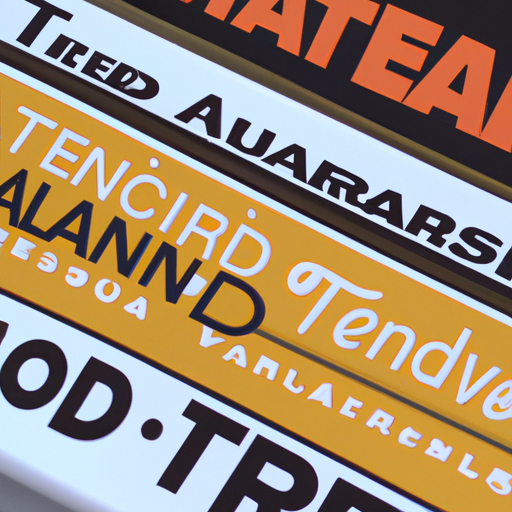
-
Table of Contents
The Art of Label Printing: Techniques and Trends

Labels play a crucial role in product packaging, branding, and marketing. They not only provide essential information about a product but also serve as a visual representation of a brand’s identity. In recent years, label printing has evolved significantly, with new techniques and trends emerging to meet the demands of the market. This article explores the art of label printing, highlighting various techniques and trends that are shaping the industry.
1. Flexographic Printing
Flexographic printing is one of the most widely used techniques in label printing. It involves the use of flexible relief plates made of rubber or photopolymer to transfer ink onto the label material. This technique is known for its high-speed production capabilities and ability to print on a wide range of substrates, including paper, film, and foil.
Flexographic printing offers excellent color reproduction and is suitable for large print runs. It is commonly used for labels in the food and beverage industry, where vibrant and eye-catching designs are essential for attracting consumers. Additionally, flexographic printing allows for the incorporation of special effects, such as embossing, varnishing, and foil stamping, to enhance the visual appeal of labels.
2. Digital Printing
Digital printing has revolutionized the label printing industry by offering greater flexibility and customization options. Unlike traditional printing methods, digital printing does not require the use of printing plates. Instead, it utilizes digital files to directly transfer ink onto the label material.
One of the key advantages of digital printing is its ability to produce high-quality labels with variable data. This means that each label can be customized with unique information, such as barcodes, QR codes, or personalized messages. Digital printing is particularly beneficial for small print runs or when quick turnaround times are required.
Furthermore, digital printing allows for the use of a wide color gamut, enabling the reproduction of intricate designs and gradients. This technique is gaining popularity in industries such as cosmetics and pharmaceuticals, where product differentiation and personalization are crucial.
3. Sustainable Labeling
In recent years, there has been a growing demand for sustainable packaging solutions. Consumers are increasingly conscious of the environmental impact of their purchasing decisions and expect brands to adopt eco-friendly practices. This trend has led to the emergence of sustainable labeling techniques.
One such technique is the use of eco-friendly materials for label production. Biodegradable and compostable substrates, such as plant-based films and papers, are becoming more widely available. These materials not only reduce the carbon footprint but also provide a unique selling point for brands that prioritize sustainability.
Another sustainable labeling trend is the adoption of water-based or UV-curable inks. These inks are free from volatile organic compounds (VOCs) and have a lower environmental impact compared to traditional solvent-based inks. Additionally, advancements in recycling technologies have made it possible to separate labels from packaging materials, further reducing waste.
4. Interactive Labels
As technology continues to advance, labels are becoming more interactive and engaging. Interactive labels incorporate elements such as augmented reality (AR), near-field communication (NFC), or QR codes to provide additional information or create immersive experiences for consumers.
For example, AR-enabled labels allow consumers to scan the label with their smartphones and view virtual content, such as product demonstrations or 3D animations. NFC-enabled labels enable users to tap their smartphones against the label to access product information or promotional offers. QR codes can be scanned to redirect consumers to a brand’s website or social media pages.
Interactive labels not only enhance the consumer experience but also provide valuable data to brands. By tracking consumer interactions with the labels, brands can gain insights into consumer preferences and behavior, enabling them to tailor their marketing strategies accordingly.
5. Anti-Counterfeiting Measures
Counterfeiting is a significant concern for brands, particularly in industries such as pharmaceuticals and luxury goods. To combat counterfeiting, label printing techniques have evolved to incorporate various security features.
One such feature is the use of holographic or tamper-evident labels. These labels are designed to be visually striking and difficult to replicate, making it easier for consumers to identify genuine products. Additionally, tamper-evident labels provide a clear indication if a product has been tampered with, ensuring consumer safety.
Another anti-counterfeiting measure is the integration of track-and-trace technologies. These technologies involve the use of unique codes or serial numbers on labels, which can be scanned and verified throughout the supply chain. This enables brands to track the movement of their products and identify any unauthorized distribution channels.
Summary
The art of label printing has evolved significantly in recent years, driven by advancements in technology and changing consumer preferences. Flexographic printing and digital printing are the two primary techniques used in label production, each offering unique advantages. Sustainable labeling techniques have gained traction as brands strive to meet the growing demand for eco-friendly packaging solutions.
Interactive labels and anti-counterfeiting measures are also shaping the label printing industry, providing brands with opportunities to engage consumers and protect their products. As the market continues to evolve, it is essential for brands to stay updated with the latest techniques and trends in label printing to effectively communicate their brand identity and meet consumer expectations.
